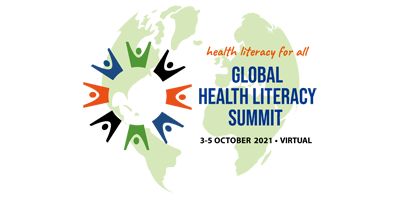Abstract Preview
Abstract
|
Title Comparison of Health literacy and eHealth literacy among Arabic-speaking migrants and Swedish-speaking residents in Sweden |
|
Type Oral Presentation Only |
|
Theme Global Health Literacy Summit 2021 |
|
Topic Health literacy and health equity |
Authors
|
Main Author Josefin Wångdahl1 |
|
Presenting Author Josefin Wångdahl1 |
|
Co-Author Lina Bergman2 Ulrica Nilsson2 3 Karuna Dahlberg4 Maria Jaensson4 |
Authors' Institution
|
Department / Institution / Country Department of Public Health and Caring Sciences / Uppsala University / Sweden (Sverige)1 Department of Neurobiology, Care Sciences and Society / Karolinska Institute / Sweden (Sverige)2 Department of Perioperative Medicine and Intensive Care / Karolinska University Hospital / Sweden (Sverige)3 School of Health Sciences, Faculty of Medicine and Health / Örebro University / Sweden (Sverige)4 |
|
Abstract Content (abstracts should be written in Size 11 font, Arial font style) Introduction: Worldwide, there are wide disparities in the health status of different social groups. Health literacy is important to understand and make decision concerning one’s own health and limited health literacy has been associated with poor health outcomes, especially among vulnerable groups such as migrants. Objective/methods: A cross-sectional study aiming to explore and compare Health literacy and eHealth literacy among residents in Sweden having Swedish versus Arabic as their native language. Data was collected in 2019 from two groups of residents in Sweden (i.e., native speakers of Swedish and native speakers of Arabic). Comprehensive Health Literacy (CHL) was measured using the short form of the Health Literacy survey European Questionnaire (HLS-EU-Q16) and eHealth literacy (eHL) measured with the eHealth literacy scale (eHEALS). Overall CHL and eHL levels as well as answers on item level from the two groups were compared. Uni- and multivariate logistic regression analysis were performed to examine the associations between native language; and limited eHL and CHL. Results: A total of 703 residents participated, 51% had Swedish and 49% had Arabic as native language. Differences in levels of CHL and eHL were found between the two groups. Residents with Arabic as native language that had lived < 11 years in Sweden had lower CHL and eHL levels compared to those that had lived in Sweden ≥ 11 years. Further, having Arabic as native language was associated with limited CHL (odds ratio 3.9, 95% CI 2.82-5.41, p < .01) and limited eHL (odds ratio 1.75 95% CI 1.24-2.45, p < .01) compared to having Swedish as a native language. These associations remained after adjusting for socio-demographic variables, self-perceived health, frequency of internet use, and the perceptions of internet as important and useful to find information about one’s own health. Conclusions: The results indicate that having Arabic as native language in Sweden is associated with limited CHL and eHL. Yet, level of CHL and eHL was influenced by numbers of years living in Sweden and findings further show that eHL was less affected than CHL. To improve HL, digital health information should be prioritized among Arabic speaking migrants. |
|
Other Topics Preferences(Maximum of two topics only and please note that the Program Committee reserves the right to decide on the final presentation format.) Health literacy and cultural appropriateness Digital and technological health literacy |
Requires Audio or Video system for Presentation?: No
